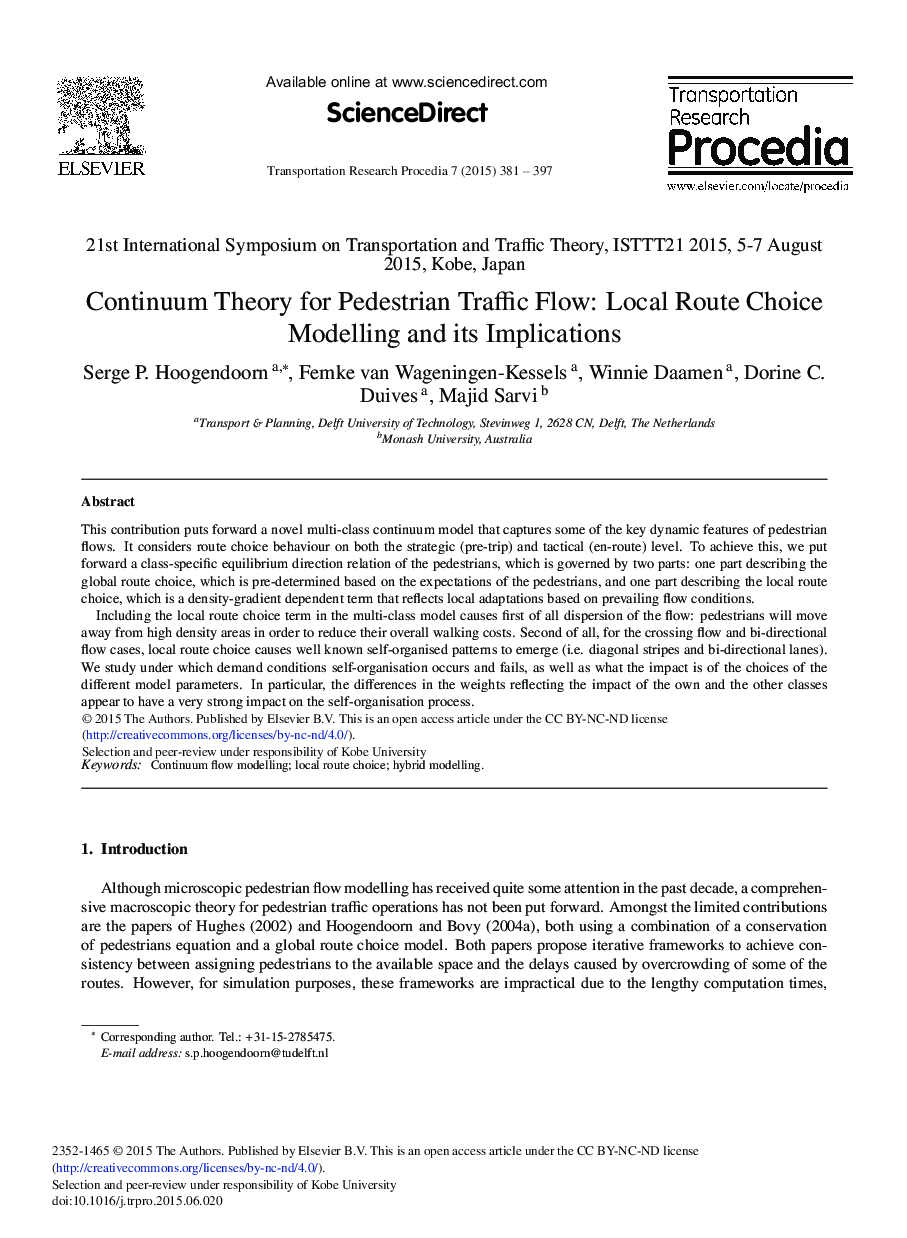| Article ID | Journal | Published Year | Pages | File Type |
|---|---|---|---|---|
| 1106929 | Transportation Research Procedia | 2015 | 17 Pages |
This contribution puts forward a novel multi-class continuum model that captures some of the key dynamic features of pedestrian flows. It considers route choice behaviour on both the strategic (pre-trip) and tactical (en-route) level. To achieve this, we put forward a class-specific equilibrium direction relation of the pedestrians, which is governed by two parts: one part describing the global route choice, which is pre-determined based on the expectations of the pedestrians, and one part describing the local route choice, which is a density-gradient dependent term that reflects local adaptations based on prevailing flow conditions.Including the local route choice term in the multi-class model causes first of all dispersion of the flow: pedestrians will move away from high density areas in order to reduce their overall walking costs. Second of all, for the crossing flow and bi-directional flow cases, local route choice causes well known self-organised patterns to emerge (i.e. diagonal stripes and bi-directional lanes). We study under which demand conditions self-organisation occurs and fails, as well as what the impact is of the choices of the different model parameters. In particular, the differences in the weights reflecting the impact of the own and the other classes appear to have a very strong impact on the self-organisation process.
